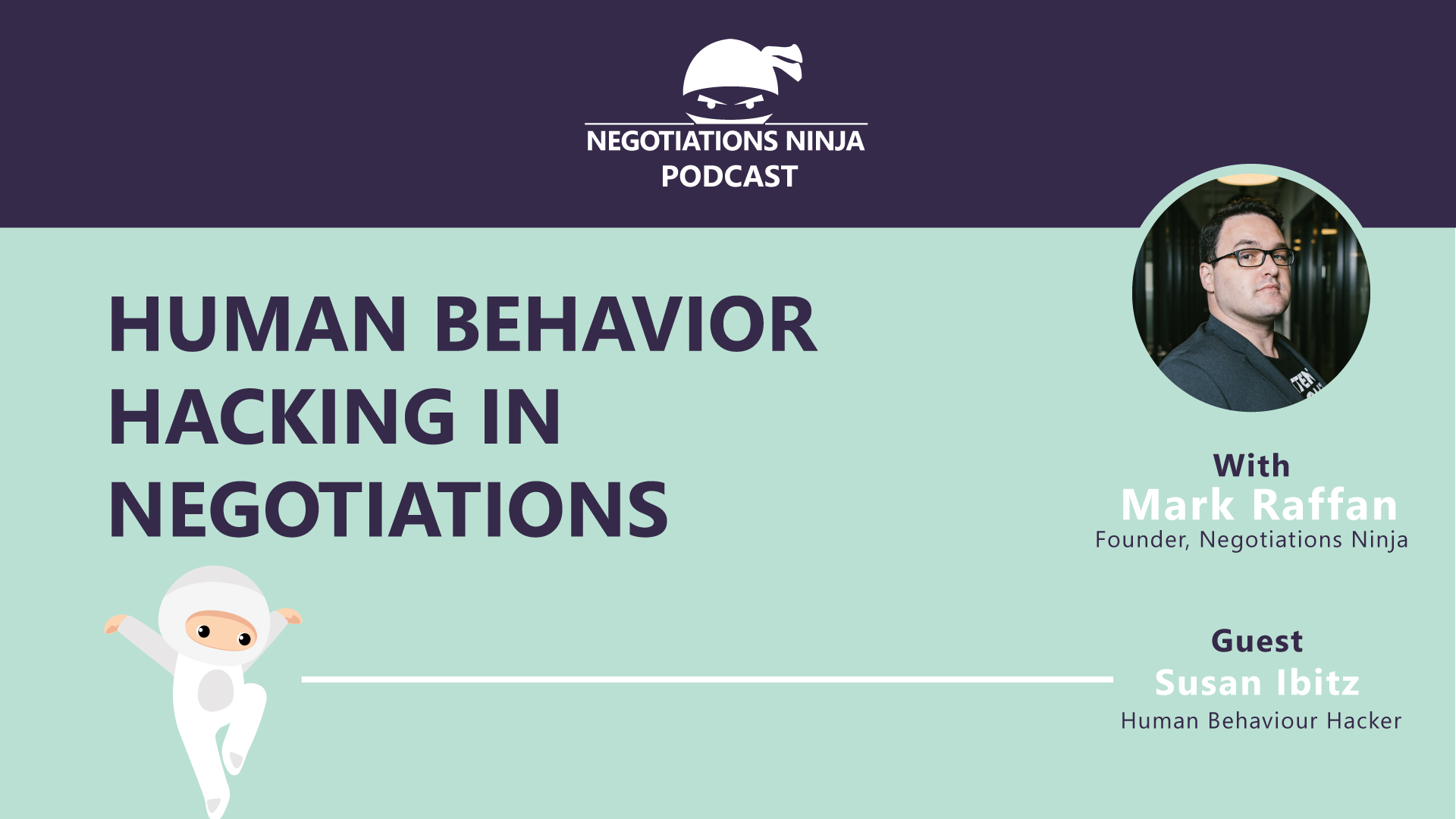Some people hack computer systems but Susan Ibitz hacks human behavior. Susan runs a company called the Human Behavior Lab where she and her team specialize in face reading, statement analysis, body language, and micro-expressions.
In this episode, we jump into these four areas with both feet and discuss how understanding each of these areas can make you a better negotiator and a better communicator. Susan even shares how you can tell if someone is lying to you. This is a fascinating episode you can’t miss—and you must take notes.
Outline of This Episode
- [3:00] Learn more about Susan Ibitz
- [5:35] A brief overview of body language
- [11:36] How physical features impact face reading
- [17:08] Understanding the basics of statement analysis
- [19:57] The #1 thing negotiators need to learn to close better deals
- [34:33] Can you tell if someone is lying to you?
A brief overview of body language
Body language is the way your body communicates to others what’s going on with you. We know intrinsically from an early age how to read others. Babies take their cues from their caregivers. If you look scared, the baby will cry.
When you’re a child and your aunt comes to visit, and your mom tells you to smile, you learn how to show a sincere smile (even though you don’t feel it inside). The problem is that we’re taught not to show emotions and feelings. But reading emotion is a necessary skill to protect against aggression and learn how to communicate.
It’s easy to hide your emotions on your face…but not your feet. People’s feet tell the real story. If you’re in a conversation with someone and their feet are facing the door, they’re not engaged with you. They want to leave.
The other way you can learn to read people’s faces is by recognizing microexpressions. Microexpressions are the way your brain communicates to your face and emotion. Face reading is the GPS to your brain and how you process, intake information, and communicate that information verbally.
Listen to learn how you can understand the basics of statement analysis!
The #1 thing negotiators need to learn to close better deals
People read faces every day to learn how to communicate with others. If you want to sell to someone, you need to speak their language. If you can identify their baseline, you can address their needs and sell to them how they want to be sold to. How do you do that? One simple way to develop a baseline is by looking at someone’s eyebrows.
If you walk into a meeting and the person has a low distance between their eyebrows and eyelids, they will be friendly and open. They are more playful with their hands. When this person isn’t feeling comfortable, the playfulness will cease. Their body movements will quiet. Try to engage them to get them back to their baseline.
If someone has a large difference between their eyebrows and eyelids, they’ll be more reserved. They need personal space. They’ll be distant in the beginning. They’ll shorten the distance and become more playful if they feel comfortable.
If you have round eyebrows, you’re a people person who loves family. You’ll want to connect with them differently. If they have straight eyebrows, you need to hit the bullet points and be succinct. People with pointy/triangle-shaped eyebrows like to be in control and know their data.
Susan fell off her bike as a child. Now, the right side of her face has a small deviation. So when she smiles, it’s crooked. Someone who doesn’t know her may read that as contempt. But it’s simply because one side of her face is stronger than the other.
The most important baseline you need to learn is yourself. You have to differentiate when someone is reacting to you. If someone is upset with you, how did you enter the room? Are you showing anger or disgust? Unconsciously, the brain will say “I don’t trust this person.” Don’t generate a reaction to you.
Can you tell if someone is lying to you?
When someone is lying to you, they will look at you more. They have to know if you’re buying their lies. It also takes the brain longer to format a lie versus the truth. So if it’s taking someone a while to answer, it may be deceit.
If someone embellishes an answer instead of saying “yes” or “no,” they may be trying to hide the truth. If someone acts like you’re attacking them, they might be trying to redirect you. Invoking religion—i.e. Saying “I swear to God”—usually means they had something to do with it.
The biggest misconception about lying is that we can tell if someone is lying based on where they are looking. When Susan is trying to remember something, she closes her eyes and lowers her head to visualize it. She doesn’t have her eyes open at all. That’s why it comes back to creating a baseline for someone.
A way you can do that is by asking someone something unusual like, “Have you ever seen a pink Lamborghini?” Watch their face and what they look like when they’re trying to remember something. That’s your baseline.
Susan goes into great detail on face reading, statement analysis, body language, and micro-expressions in this episode. Don’t miss it!
Resources & People Mentioned
Connect with Susan Ibitz
Connect With Mark
- Follow Negotiations Ninja on Twitter: @NegotiationPod
- Connect with Mark on LinkedIn
- Follow Negotiations Ninja on LinkedIn
- Connect on Instagram: @NegotiationPod




